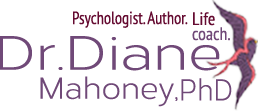At my island winter retreat, the headlines of the newspaper for the last several days have been focused on the story of an abandoned car and a missing person. The car, sadly, was found abandoned at the top of the Cross Island Bridge, unlocked, with the keys on the seat. You can probably guess at the outcome. The missing person’s body was found by a fisherman below a dock after several days of searching. It is being treated as an apparent suicide. While it has not been made public, I have been told there was a note. It seems as though the body was that of a beloved individual involved in the early development of this island, who more recently, had developed a first class jazz club. While I did not know him myself, he was apparently well known and respected in this community long before I became a winter resident. The story is not so rare today as we hear of suicide more and more frequently. Recently it was listed as the 10th leading cause of death for all ages. While I have worked directly and intimately with suicidal clients, this story made me consider what we all might do to help prevent this growing problem. What can you, the reader do to help eliminate suicide? I was just wondering……
While I have never personally experienced the suicide of a client, I certainly have had clients affected by the aftermath of suicide. One woman I saw years ago found her husband hanging in their garage and of course was devastated by it. Another lost a son to suicide when he was run over by a train. The families and other survivors of these tragedies are left with thoughts haunted by questions of why and what could they have done to prevent it? Unless it is a love gone wrong situation, the cause of one’s decision for suicide is usually not related to one individual. It is connected to how they see themselves in relation to life in general, their lack of opportunities, how people view them, shame and or humiliation, a feeling of general hopelessness. So the point is, it is not usually one person’s fault nor is it one person’s responsibility. So how do we collectively address this growing concern?
The first problem is to learn to identify where there may be a problem. Many people who are suicidal actually hide it quite well. Often however, the signs are there. Sadly, we often identify them incorrectly. The first red flag is drug use. People just don’t overuse drugs unless they are too uncomfortable without them. Social drinking is just that. Anything beyond it is really a cry for help. Another red flag is isolative behavior. We’ve often seen this connected to school shootings and other similar rampages where the shooter ends up shooting himself. Another danger sign is anger, which is a defensive mask for vulnerable feelings. Someone who is angry a lot is a very unhappy person who is in a lot of emotional pain. Erratic extremes in behavior are signals as well as loss of interest. Persons who feel they are a burden and who feel trapped in some way with no way out are also at risk. These are the early signs and this is when we should begin to intervene. As a suicide plan begins to take form there are other more apparent signs, such as preoccupation with death, sleep deprivation, reckless behavior, and settling of one’s affairs.
In addition to those heading towards suicide, there are thousands of other people who exhibit these symptoms who are suffering from depression. While they may have no plan for suicide, they suffer intolerably. So when you see these signs, what should you do? You do not need to be a psychologist to lend a helping hand. You do not need to be professionally trained to show a kindness, to listen to someone who needs a listener, to provide a shoulder to lean on. Anyone can offer friendship. There are also things you can stop doing. You can stop gossiping about people. You can stop bullying. You can stop judging. You can stop being petty. You can learn to be forgiving. Life doesn’t have to be organized around exclusive cliques. You can learn to be inclusive and invite everyone to participate. You’ve heard the term, “The more the merrier!” There is always something to learn and everyone has something to offer. Open your heart and see what it can behold.
The best way I know to help prevent suicide and reduce depression happens long before an individual feels the need to see a therapist. Watch for the signs, be aware. Offer a helping hand, send an invitation, smile. Sometimes the feeling of acceptance is all that is needed. Just think of the personal power you have to positively affect someone’s life! Are you willing to extend yourself to save or change a life? In fact, you may be saving or changing more lives than you even realize!
Can you give it a try?
I was just wondering………

